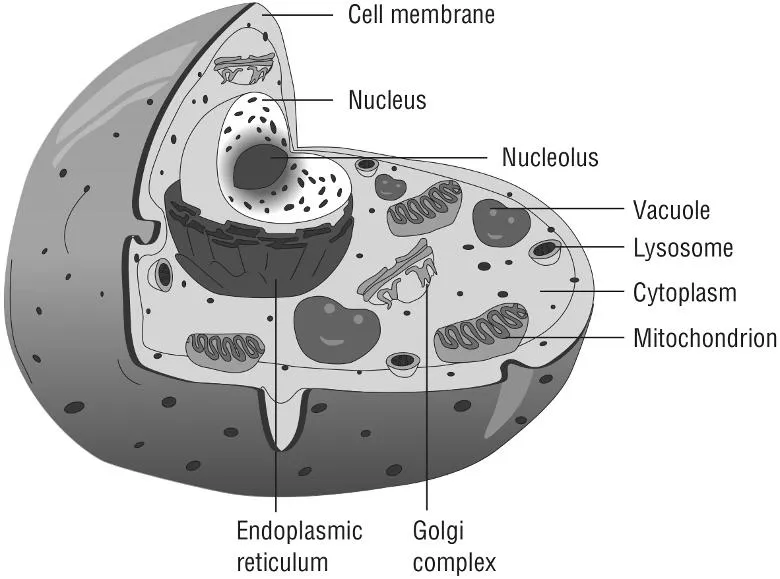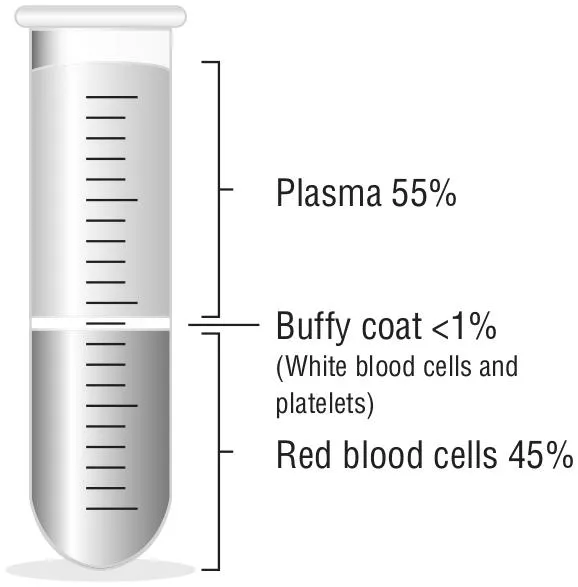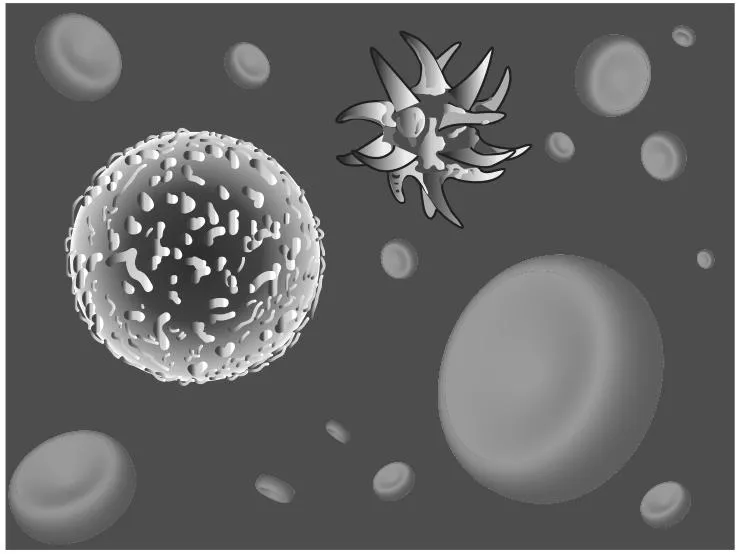
- 320 pages
- English
- ePUB (mobile friendly)
- Available on iOS & Android
eBook - ePub
What You Need to Know About Pernicious Anaemia and Vitamin B12 Deficiency
About this book
Based on responses to his earlier books - Pernicious Anaemia: the forgotten disease, and Living with Pernicious Anaemia - and on the daily enquiries and cries for help that come to the Pernicious Anaemia Society, Society-founder Martyn Hooper brings together the essential knowledge that sufferers and their families and friends need to understand, and withstand, vitamin B12 deficiency and pernicious anaemia. Martyn discusses the many uncertainties and difficulties associated with the condition, what these may mean for sufferers, the huge variations in individual experience, and how to live as fully as possible despite having the condition. Ending on a positive note, he looks to future developments and the changes they may bring.
Frequently asked questions
Yes, you can cancel anytime from the Subscription tab in your account settings on the Perlego website. Your subscription will stay active until the end of your current billing period. Learn how to cancel your subscription.
At the moment all of our mobile-responsive ePub books are available to download via the app. Most of our PDFs are also available to download and we're working on making the final remaining ones downloadable now. Learn more here.
Perlego offers two plans: Essential and Complete
- Essential is ideal for learners and professionals who enjoy exploring a wide range of subjects. Access the Essential Library with 800,000+ trusted titles and best-sellers across business, personal growth, and the humanities. Includes unlimited reading time and Standard Read Aloud voice.
- Complete: Perfect for advanced learners and researchers needing full, unrestricted access. Unlock 1.4M+ books across hundreds of subjects, including academic and specialized titles. The Complete Plan also includes advanced features like Premium Read Aloud and Research Assistant.
We are an online textbook subscription service, where you can get access to an entire online library for less than the price of a single book per month. With over 1 million books across 1000+ topics, we’ve got you covered! Learn more here.
Look out for the read-aloud symbol on your next book to see if you can listen to it. The read-aloud tool reads text aloud for you, highlighting the text as it is being read. You can pause it, speed it up and slow it down. Learn more here.
Yes! You can use the Perlego app on both iOS or Android devices to read anytime, anywhere — even offline. Perfect for commutes or when you’re on the go.
Please note we cannot support devices running on iOS 13 and Android 7 or earlier. Learn more about using the app.
Please note we cannot support devices running on iOS 13 and Android 7 or earlier. Learn more about using the app.
Yes, you can access What You Need to Know About Pernicious Anaemia and Vitamin B12 Deficiency by Martyn Hooper in PDF and/or ePUB format, as well as other popular books in Medicine & Nutrition, Dietics & Bariatrics. We have over one million books available in our catalogue for you to explore.
Information
Chapter 1
Blood, anaemia, pernicious anaemia and vitamin B12 deficiency
When I was eventually diagnosed as having pernicious anaemia, I took it upon myself to try to find out as much about the disease as I could and, before very long, I found myself wishing that I had paid more attention to my science teachers in secondary school as I struggled to grasp the very basics of biology and chemistry. Thankfully, due to the internet and the patience and enthusiasm of various members of the scientific community, I started to understand what had happened to me that had caused me to develop pernicious anaemia. It also became quite clear early on in my investigations that there was a great deal of confusion over the different types of anaemias and how pernicious anaemia differed from B12 deficiency. In this chapter I will try to explain these differences, but that will require some knowledge of basic biochemistry and so it’s fitting that we begin our journey by looking at the smallest of all living things – cells.
Cells
To even begin to understand the nature of blood and different anaemias we first have to grasp the basics of cellular biology. You, like me, are made up of cells, unless that is you are a robot and a literate one at that. Cells were first discovered by the English natural philosopher Robert Hooke in 1665, who named them cells after the Latin ‘cella’, meaning a small room like those inhabited by monks at the time. Cell theory is the basis of biology and states that all organisms are made up of cells. Cells are the most basic unit of life and you are composed of around 75 trillion of them. A cell is a very busy place that has been defined as a ‘vast teeming metropolis’ by the biochemist Guy Brown and ‘a complex chemical refinery’ by James Trefil, the physicist (see Figure 1.1). It is a refinery because it is home to some very complex chemical goings-on and a metropolis because it is full of activity and powered by electricity.

Figure 1.1 Anatomy of an animal cell
A cell is made up of millions of entities, including ‘endosomes’, ‘ligands’, ‘lysosomes’, ‘peroxisomes’ and proteins, and these carry out all manner of tasks, including extracting energy from food, carrying out repairs, getting rid of waste, sending messages and tackling intruders. While we needn’t go into each of these entities in detail, one very important part of the cell is an organelle called a mitochondrioni which produces energy for the body – they (plural: mitochondria) are usually likened to the cell’s battery pack, which provides the energy that allows cells to go about doing what they do – which allows you to live.
There are many different types of human cells but the one that is of greatest interest to us is one particular type – the red blood cell.
Blood
Saying that blood is a complicated substance is somewhat of an understatement – a bit like saying that the maiden voyage of the Titanic didn’t go well. Blood is an extremely complex material that is classified by doctors as a tissue just like skin, or muscle, or bone. Now, before we go any further in our investigation into anaemia (too few red blood cells), pernicious anaemia and vitamin B12 deficiency, it is necessary to understand a little bit about blood.
Most people know that blood transports oxygen from the lungs to whatever cells and tissues need it – which is all of them. And even though this is an extremely important function it also does many other things:
- it removes carbon dioxide and other waste products from cells and tissue
- it supplies essential nutrients to cells including fatty acids, amino acids and glucose
- it protects us from any unwelcome organisms and infections using its arsenal of antibodies
- it regulates our acid levels
- it has special cells which form clots when we bleed
- it transports hormones, which are chemicals that transmit messages telling other cells to do certain things
- it helps regulate body temperature by bringing warmth to cold parts of the body in cold weather, and by getting cooled off in the skin in hot weather
- it also has what is known as a hydraulic function – if you are a male you can thank blood for filling your penis (engorgement) when you are aroused, with the result that you experience an erection.
Blood is made up of two main component parts: cells and plasma (see Figure 1.2). Plasma is a sort of watery broth that makes up 55% of the blood volume. It consists of a solution of water (92%), proteins, lipids, inorganic ions (salts) and glucose. The proteins include hormones. The salts include urea, a waste product of cells. The cells include red blood cells (also known as erythrocytes), white blood cells (leucocytes) and platelets (thrombocytes). Take a look at Figure 1.3: the red blood cells are, well, red, the white blood cells are the round globe-like cell and the platelet is the ‘cell’ with the spikes. In reality, platelets are much smaller than red blood cells.ii Platelets form clots to stop bleeding from wounds (they are responsible for those wonderful scabs which formed on your knees when you were a child), the white blood cells combat infections and disease and the red blood cells transport oxygen around your body.
Like all human cells, red blood cells are produced in bone marrow and you produce an awful lot of them – millions and millions every day; they are the most common cells in your body. At any one time a healthy individual will have between 20 and 30 trillion red blood cells, though men will have around 5% more than women. Red blood cells ‘live’ in the blood for between 100 and 120 days.

Figure 1.2 The composition of blood

Figure 1.3 Red blood cells, white blood cells and platelets
Now that you know a little about blood – and believe me what I have just described is only a tiny amount of what has been discovered about this fascinating substance – we can turn our attention to the tricky subject of anaemia.
Anaemia
The word anaemia first appeared in the middle of the 19th century. It is a combination of two Greek words – ‘haima’, which means blood, and ‘an’ which is Greek for ‘without’, so anaemia translates literally as ‘without blood’. To doctors anaemia refers either to a patient not having enough red blood cells or not enough of the iron-carrying haemoglobin.
There are four causes of anaemia:
- Inadequate production of red blood cells which could be due to:
a. dysfunctional bone marrow – remember red blood cells are produced in bone marrow
b. lack of B12
c. lack of folic acid - Destruction of red blood cells due to an autoimmune condition
- Blood loss from serious injury or large surgical operations
- Inadequate production of haemoglobin, usually because the patient is deficient in iron – see below.
Haemoglobin
Haemoglobin is the major component of red blood cells and it is what makes them red-coloured. It is made up of two essential constituent parts – a protein (‘globin’) and iron (‘haem’). If you lack one of these two ingredients you will not be able to make haemoglobin and so you will be unable to make properly functioning red blood cells, and that would be a disaster because it is haemoglobin in red blood cells that is responsible for transporting oxygen around your body. What happens is that the iron bonds with the protein ‘globin’ to form haemoglobin and the oxygen then binds to the iron part of the haemoglobin. Haemoglobin then is a proteiniii that contains four iron atoms, which is why iron is such an important part of a healthy diet; if you lack iron (iron deficiency), then it stands to reason that you won’t be able to produce healthy haemoglobin. It is the haemoglobin that is responsible for transporting oxygen to wherever it is needed in the body – which is everywhere. It is easy to take oxygen for granted – i...
Table of contents
- Cover
- Title Page
- Copyright
- Dedication
- Epigraph
- Contents
- Acknowledgements
- Foreword
- Introduction
- Chapter 1: Blood, anaemia, pernicious anaemia and vitamin B12 deficiency
- Chapter 2: Causes of vitamin B12 deficiency
- Chapter 3: Problems in diagnosing vitamin B12 deficiency
- Chapter 4: Problems in diagnosing pernicious anaemia
- Chapter 5: Problems with the treatment of pernicious anaemia
- Chapter 6: Pernicious anaemia, cancer, neurology and psychiatry
- Chapter 7: Living with pernicious anaemia
- Chapter 8: Current trends and future developments
- Epilogue
- Appendix 1: Martyn’s story
- Appendix 2: Symptoms of vitamin B12 deficiency
- Appendix 3: Tests for full blood count
- Appendix 4: Summary of new guidelines on cobalamin and folate for medical professionals
- Appendix 5: Solicitors briefed about pernicious anaemia
- Appendix 6: People of note who have died from pernicious anaemia
- Appendix 7: Ten frequently asked questions
- Glossary
- Index
- About the Author
- Advertisement